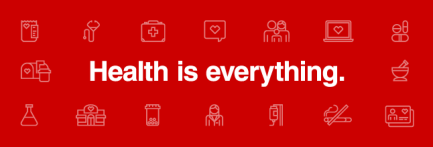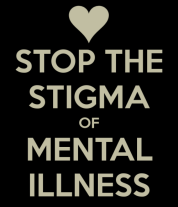Sources:
1.) Grinberg, Emanuella. “Trigger warnings, safe spaces: Your guide to the new school year.” CNN, 26 Aug. 2016, www.cnn.com/2016/08/26/us/university-of-chicago-trigger-warnings-safe-spaces/. Accessed 28 April 2017.
2.) Lukianoff, Greg and Jonathan Haidt. “The Coddling of the American Mind.” The Atlantic, Sept. 2015, www.theatlantic.com/magazine/archive/2015/09/the-coddling-of-the-american-mind/399356/. Accessed 28 April 2017.
3.) Heer, Jeet. “Generation PTSD: What the “Trigger Warning” Debate Is Really About.” New Republic, 20 May 2015, www.newrepublic.com/article/121866/history-ptsd-and-evolution-trigger-warnings. Accessed 28 April 2017.
4.) Charnis, Daniel. “My Rights vs. Your Trigger Warning.” Chronicle of Higher Education, vol. 62, no. 25, 2016, pp. B10-B11, search.ebscohost.com/login.aspx?direct=true&db=eue&AN=113401897&site=ehost-live. Accessed 28 April 2017.
5.) Lockhart, Eleanor Amaranth. “Why Trigger Warnings Are Beneficial, Perhaps Even Necessary.” First Amendment Studies, vol. 50, no. 2, 2016, pp. 59-69, www.dx.doi.org/10.1080/21689725.2016.1232623. Accessed 28 April 2017.
What does each source do/add to the argument?
1.) This source from CNN gives the basic background on what trigger warnings/safe spaces are and why they are now being heavily debated on college campuses. The article discusses the letter the University of Chicago recently sent out to incoming freshman in order to warn them that the school does not condone the use of trigger warnings because they believe that trigger warnings censor learning. This source not only provides some background on trigger warnings, but also allows me to begin looking at the opposition to trigger warnings in my paper on the basis that they censor learning and prohibit a free learning environment.
2.) This source opposes trigger warnings and feels that they allow college students “a way out” of dealing with things that make them uncomfortable. It also claims that in today’s politically correct society, one’s emotions are safeguarded because people are afraid to offend others in what they say. This will contribute to the argument against trigger warnings because it will challenge the idea that trigger warnings mean nothing more than just warning/preparing those who need them. This source also brings up the idea of exposure therapy in the classroom and how trauma victims need to face their problems instead of avoid them. I will highlight this argument in my paper when discussing the opposing side, but then rebuttal it with another source that I found (source 5).
3.) This source questions the necessity of trigger warnings and the expansion of the definition of PTSD to include many things other than just after combat (like sexual assault, domestic abuse, etc.). This source will allow my argument to focus on how much is too much when it comes to trigger warnings. It will allow me to question whether trauma on college campuses is defined too loosely or not. It will also question some of the uses of trigger warnings specifically and target the limits to which trigger warnings are actually needed.
4. ) This source looks at a specific time when a trigger warning was expected by an individual on a college debate team in order to determine if they would be triggered or emotionally charged during the debate of a topic, and therefore would want to bypass the particular topic and opt for another one. This source is not necessarily against trigger warnings, but rather, what they have the potential to do when used incorrectly. Although trigger warnings were wanted to expand their original definition to block or prevent the discussion of topics in this case, this article will add the idea of how trigger warnings can be used incorrectly to censor topics as well as the idea of ambiguity and how there is no specific standard as to which topics need trigger warnings.
5.) This source supports trigger warnings on the basis that they do not stop distressing material from being taught, but rather, allow triggered students to mentally prepare for distressing material to come so that they can have the opportunity to think critically about the topic just like their non-triggered peers. This source adds the idea of equality of opportunity in learning and supports the idea that trauma victims should be emotionally prepared so that they have an equal chance at openly discussing the material. This source also brings up the Americans with Disabilities Act (ADA) and how PTSD patients are mandated to receive reasonable accommodations, to which trigger warnings can be accommodations that are one of the least disruptive options. This will allow for me to add to my argument that trigger warnings do not hurt those who are not triggered, they only serve to help those who are. Finally, this source also provides the rebuttal to the idea of exposure therapy in the classroom, from the opposing side, and will add to my side the idea that a classroom is not a therapist’s office and that teachers are not trained to practice exposure therapy.





 After researching the mental health movement and starting to build my website, I’ve realized just how important online platforms are. Specifically with the mental health movement on college campuses, and the need to create a welcoming space for all, an online platform reaches people who may be struggling in silence. Online pages allow shy people or those ashamed of their struggle to step out, voice their opinions, and get help.
After researching the mental health movement and starting to build my website, I’ve realized just how important online platforms are. Specifically with the mental health movement on college campuses, and the need to create a welcoming space for all, an online platform reaches people who may be struggling in silence. Online pages allow shy people or those ashamed of their struggle to step out, voice their opinions, and get help.